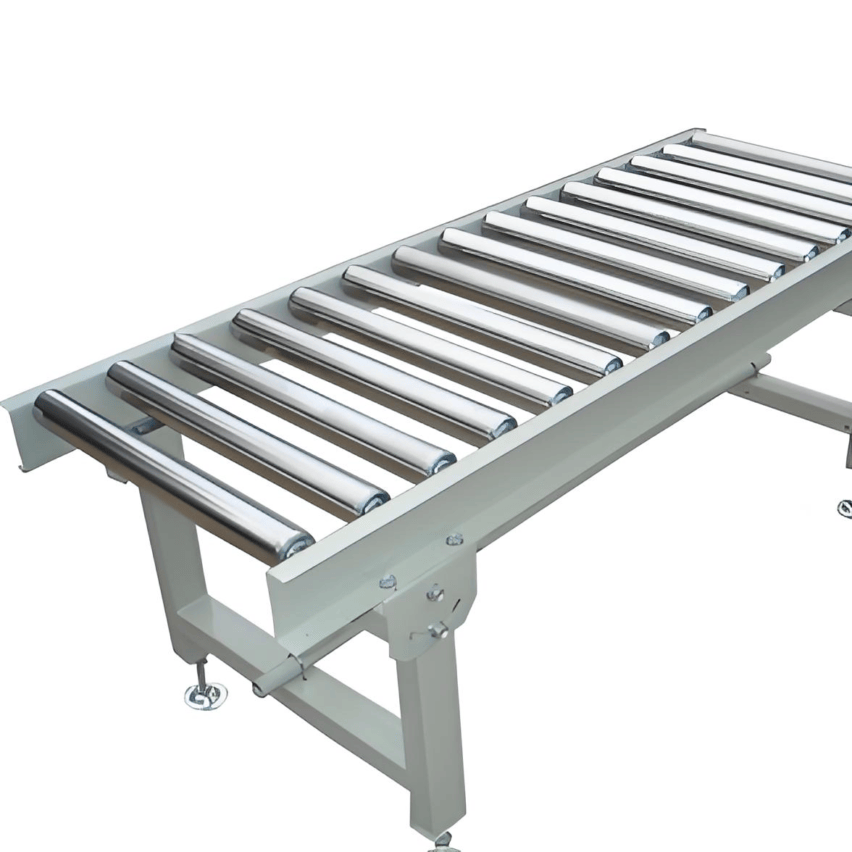I. Technological evolution: from mechanical drives to neuralised systems
Modularity Beginnings in the 1980sThe genes of FlexLink were laid down - free assembly of production lines with standardised chain plates (pitch 38.1 mm) and aluminium beams. And now it has evolved into"Mechanical-Data Duo"::
- The Flexible Connectivity Revolution: Modular storage units isolate process failures, reducing automotive welding line downtime by 40%;
- precision leap: Linear motor drive unit (DCU) positioning accuracy of ±0.1mm, semiconductor package yield increased to 99.97%;
- Neuralised feedback: Vibration sensor + temperature monitoring real-time regulation of injection parameters, product deformation rate decreased by 72%.
personal viewpointTechnology iteration can easily fall into the trap of "only advanced theory". A power plant pushes AGV logistics but ignores FlexLink protocol compatibility, and the beat goes down by 15% ---Real upgrades require bridging "data silos" rather than piling on the hardware..
II. Core architecture: a four-dimensional synergistic technology matrix
1. Sensory layer: multimodal industrial senses
- Machine Vision + Pressure Sensing: Automotive parts QC speed up by 300% with a false positive rate of only 0.02%;
- Edge Prediction System: Bearing loss model warns of failures 72 hours in advance, shortening maintenance response by 70%.
2. Control layer: distributed decision centre
- PLC + 5G Industrial Network: 200 devices with millisecond response and order delivery cycle compression of 40%;
- virtual debugging of digital twins: Virtual validation of injection moulding parameters, trial production cost reduction of 90%.
3. Implementation layer: evolution of human-computer collaboration
- Dual Lift AGV System: ±0.5mm precision synchronised lifting of the chassis, eliminating the traditional friction line "blind spot waiting";
- Array of collaborative robots: Man-machine hybrid operation reduces manual dependence 83%, safety distance control ±2cm.
4. Logistics layer: dynamic route optimisation
- Magnetic Levitation Cross-Level Conveying: -196℃ liquid nitrogen environment zero friction transport, energy consumption is only the traditional 5%;
- Chain plate flexible conveyor: Turning, climbing and spiral conveying in 3D space with a minimum turning radius of R150mm.
III. Industry customisation: scenario-based innovation to break through pain points
High-end Dependency and Adaptation Dilemma
- Import rate of core components exceeds 60%: High-precision gearboxes and high-temperature-resistant bearings constrain autonomy;
- conflict between hygiene and explosion protectionLithium battery workshop needs resistance 10⁶-10⁹Ω static dissipative chain, general-purpose equipment is difficult to meet.
Customised Breakthrough Paths
- Pharmaceutical aseptic production line: Fully sealed stainless steel mesh belt + in-line cleaning (CIP), biological contamination risk reduced by 99% (in line with GMP specifications);
- Heavy Duty Mining Systems: 50° inclination pattern belt conveyor solves powder spillage and extends wear life by 3 times;
- 3C Antistatic Cable: Carbon nanotube coated conveyor belts with charge dissipation <0.5 sec.
personal experienceCustomisation is never a patchwork. A new energy plantBinding of AGV paths to plant column positioning points, eliminating the cost of laser navigation 30%-Real Innovation Requires Reconstructing DNA-Level Logic in Factories.
IV. Intelligent leapfrogging: paradigm reconfiguration for open systems
Global Automated Conveying Market to Cross $800 Billion by 2025FlexLink is leading the way with three major changes:
- Dynamic beat matching: RFID identification of models.Automatic adjustment of the conveyor speed to compensate for the difference in working hoursThe 8 model has a mixing balance rate of 92%;
- Superconducting Logistics Network: Military FlexLink radio technology enables 200 nautical miles of cross-domain communication, and industrial scenarios may completely eliminate wiring costs when adapted;
- Reconfigurable production lines: Modular chain plate 10 minutes to switch production line layout, equipment reuse rate of 80%.
Exclusive data insights: 2030open architecture systemWill account for 65% of high-end production lines, forcing equipment vendors to transition"Data + M&E" integration service provider--Those enterprises that are still competitive on the basis of "price per tonne of steel" will be eliminated from the market.
Self-questioning: penetrating the essence of technology
Q1: How does FlexLink balance versatility with the need for customisation?
Modular genes are at the coreStandardised combinations of aluminium beams and chain plates (e.g. 44/63/83mm width series) allow for quick set-up of basic production lines, while adapting to the extreme requirements of the scenario with modules such as inclination adjustment and anti-static coating.
Q2: Why is military-grade FlexLink technology of interest to the manufacturing industry?
The Downscaling Value of Open Architecture: U.S. Army ValidatedMulti-protocol compatibilityThe problem is that it can solve the communication conflict between AGV and conveyor line in industrial field (avoiding the typical problem of beat loss 15%), and it may become the underlying standard of smart factory in the future.
Q3: How can SMEs apply FlexLink at low cost?
Phased Retrofit + Used Equipment EcologyFlexLink chain link system supports the transformation of old lines (minimum investment accounts for 15% of production lines), and the global market circulation rate of used equipment reaches 32%, which reduces the initial investment by 40%.













